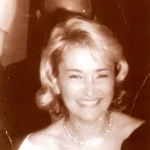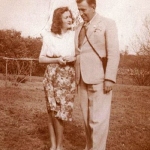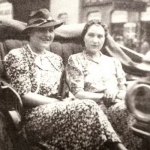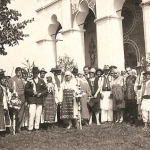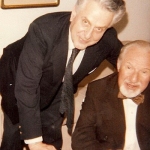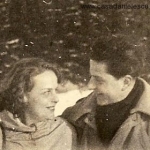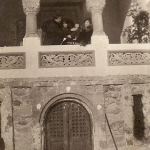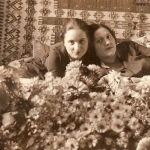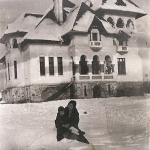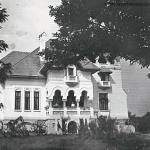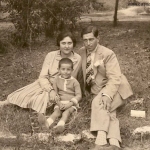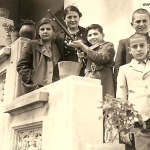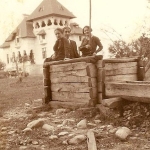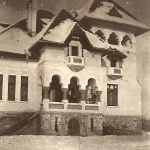The Family Saga...
… A Journey Through Time and Legacy
The narrative unfolds at the turn of the 20th century, with the name of Constantin C. Danielescu (known as Bădica), the owner of vast estates in Bârsești and Slobozia, as well as extensive properties and imposing houses in Târgu-Jiu and Bucharest, a liberal senator of Gorj for two terms.
His marriage to Sevastia Sabareanu, a descendant of the boiers with the same name from the Iași region, led them to the welcoming world of the noble manor, built with great finesse in the Gorj region. Erected in the Russian style and conceived as an estate, the manor had a chapel, a small power plant, and other annexes.
However, the noble residence seemed to be incomplete until the arrival of the family’s two children, Petre Mugur and Maria Verona, baptized in the Church of Bârsești, a foundation of their parents and other philanthropists. Over time, the family expanded with new descendants on the estate’s properties.
Petre Mugur married Maria Voiculescu, the daughter of Ion-Pantelimon Voiculescu and Ioana Hortopan from Alexeni, a refined young lady, sister of the Minister of Agriculture, Vasile Hortopan, Grigoriță Hortopan, Dumitru Hortopan, and Lenuţa Vintilă-Pociovălişteanu, known for their generosity and contributions to the local community. Their daughter, Maria-Verona, united her destiny with the academician Dan Bădărău, also a descendant of an old family of Moldovan boyars. Dan Bădărău is the son of Alexandru Bădărău, the mayor who modernized the city of Iași. This marriage did not produce any descendants to continue the family line.
The interior of the old house, still standing today, witnessed the birth of Constantin Ioan and Simona, who died prematurely at the age of two, both being the children of Petre Mugur and Mărioara. Later, the house and a large area of land became the property of the Bank of Commerce of Constantin Neamţu, due to financial problems.
The construction of Casa Danielescu began around 1927 with the support of Mărioara’s parents, the Voiculescu family.
The architecture of the manor reflects the features of the Neo-Romanian style, the first purely Romanian cultured style, also found in other buildings in the city of Tg Jiu, which denotes a leaning towards modernity of the city’s elites at that time and an alignment with the more developed cities.
The imposing design, yet sensitively ornamented in the style of the epoch, denotes an architectural work of great proportions both intellectually and materially.
The stone and wood used come from the family’s forests and mountains, transported by convoys of carts, as the village elders related.
Personal and state archives are no longer available to confirm the story of the construction phases of the house. These were probably lost during the war, or following the destruction by the communist regime, in the hope of erasing any trace of the Romanian nobility that modernized the country.
After the expropriation, the Danielescu family endured, along with other families of boyars from Târgu Jiu, exile in a communal house on the outskirts of the city. Later, the family settled permanently in Bucharest, in a modest apartment on Calea Victoriei.
The Sole Heir of the Family – Close to the Royal House of Romania
In the aristocratic world of the Danielescu family, Constantin Ioan, nicknamed Dinel, shone as the sole heir to a prestigious name. However, his path was strewn with challenges.
Passionate about cars and mechanics, Dinel graduated from the Aviation High School, followed by higher education in mechanical engineering in Bucharest. The diploma should have crowned his academic preparation, but the turbulent period of political change hindered his advancement until 1964. However, Constantin-Ioan did not let himself be defeated by the times and continued to dedicate his passion for cars.
His experience as a pilot during the war was not only a testimony of his courage, but also another element that consolidated his connection with the royal family, given the historical context of the time.
His Career and Legacy: A Life Dedicated to Excellence and Connection
His career at CICLOP București, which lasted until 1977, was marked by excellence and dedication. However, his destiny took him across the ocean, to America, where he continued to live a dignified life. Here, Constantin Ioan was not only an emigrant citizen, but also a close friend of Romanian families subjected to communist persecution, maintaining close ties within aristocratic circles.
The culmination of this connection was the honorary invitation to the wedding of Princess Maria, the daughter of King Mihai, held in New York.This event was not only a social occasion, but a tribute to Constantin Ioan’s distinguished connection with Romanian royalty.
